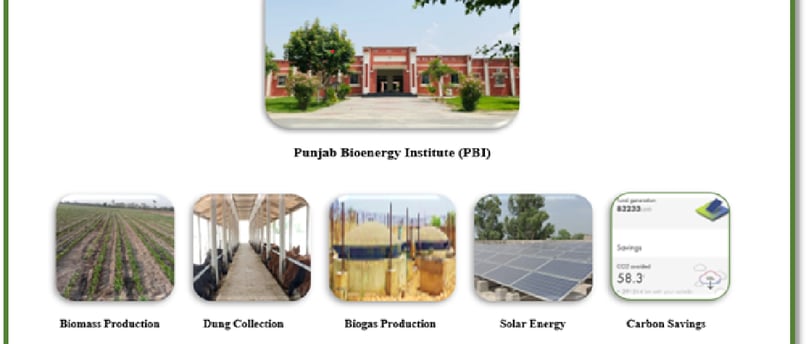Potential of Bioenergy Technologies to Mitigate Climate Change Effect
Bioenergy production from biomass is not only a sustainable and renewable way of fulfilling the energy demands of the country but also a solution to contribute to mitigate climate change. It is estimated that bioenergy sector can produce 18.73 to 265.20 TWh of electricity till 2050 that would ultimately reduce the CO2 emissions from 138.47 to 8.71 million metric tons.
AGRICULTURE
Dr. Muhammad Rizwan Tabassum, Incharge Punjab Bioenergy Institute (PBI), Assistant Professor, Punjab Bioenergy Institute (PBI), Department of Energy Systems Engineering, University of Agriculture, Faisalabad (m.tabassum.pbi@uaf.edu.pk), Dr. Muhammad Shahzad, Assistant Professor, Department of Energy Systems Engineering, University of Agriculture, Faisalabad. Dr. Arifa Mahreen, Department of Zoology, Community College, PARS Campus, University of Agriculture, Faisalabad
10/8/20242 min read


Pakistan is among top 10 countries which are victim of climate change effect but contributing less than 1% in it. Bioenergy is the appealing alternative energy that may reduce carbon emissions. Bioenergy production from biomass can be a sustainable solution to mitigate climate change. The concept of production of biomass employing Climate Smart Agriculture (CSA) practices can provides the sustainable solution. Agriculture sector of Pakistan contributes almost 25% of GDP and biomass production is one of the key feedstocks to produce sustainable energy. It is assessed that around 560 million tons of biomass can be produced annually that includes agriculture waste/residues, forest waste/residues, animal waste, municipal solid waste etc. This much amount of biomass has the potential of bioenergy production of 18.73 to 265.20 TWh till 2050 that would ultimately reduce the carbon (CO2) emissions from 138.47 to 8.71 million metric tons. Punjab Bioenergy Institute (PBI) is one of the leading institutes that is equipped with research and development laboratories and enough building infrastructure to serve as a primer institute to give sustainable solutions to mitigate climate change. All research laboratories support an Integrated Energy System that provides sustainable energy production system.
The state-of-the-art laboratories and their role to support Integrated Energy Solutions has been summarized as under;
1. Laboratory Infrastructure
State-of-the-art laboratory infrastructure is very important for testing and validation of any technology. Punjab Bioenergy Institute (PBI) is equipped with latest instruments, equipment and technical facilities to support bioenergy production systems. The key laboratories are; Bio-analytical Laboratory, Microbiology Laboratory, Heat and Mass Transfer Laboratory, Material Testing Laboratory, Biofuel Insect Laboratory, Energy Cropping and Residue Management Laboratory, Environmental Science Laboratory, Energy Physics Laboratory, Biogas Production and Management Laboratory, Electrical Engineering Laboratory and Central Hi-Tech Laboratory. These research and development laboratories support the integrated energy systems installed at PBI and it was estimated that Bioenergy technologies can contribute to reduce CO2 emissions up to 100 tons per day. While, installation of digesters at animal operations in Pakistan would reduce methane emissions by 4.7 million tons per year, representing approximately 87% reduction from these operations.
2. Integrated Energy Systems
Integrated energy system installed at PBI has three components. The first component is Drip Irrigation system (DIS) that is installed at 15 acres of land at PBI, PARS campus. It produces biomass to be utilized as feedstock for bioenergy production. Second component is biogas plant in which crop residue and animal dung is treated to produce biogas. Third component is solar system that is integrated with biogas production system to make electricity. This integrated energy system not only provides 200 KW of electricity per day but also provides 35 tons of bioslurry for soil enrichment on daily basis. The system contributes to reduce 650 kg of methane per day in terms of animal dung (animal waste) digested while 450 kg of CH4 and 300 kg of CO2 is captured per day treating 20 tons of animal dung daily.
Conclusion: It is estimated that bioenergy sector can produce 18.73 to 265.20 TWh of electricity till 2050 that would ultimately reduce the CO2 emissions from 138.47 to 8.71 million metric tons.
